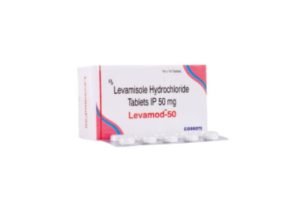
Vancomycin Overview
Vancomycin is a glycopeptide antibiotic used primarily to treat severe infections caused by gram-positive bacteria, especially those that are resistant to other antibiotics, such as methicillin-resistant Staphylococcus aureus (MRSA). It works by inhibiting bacterial cell wall synthesis, leading to cell lysis and death, and is bactericidal.
Brand Names and Formulations
Vancomycin is marketed under various brand names, including:
- Vancocin
- Firvanq
- Vancor
- Lyphocin
Common formulations and strengths:
- Capsules: 125 mg, 250 mg (used for C. difficile colitis).
- Powder for Injection: 500 mg, 1 g, 5 g, and 10 g vials.
- Oral Solution: 25 mg/mL or 50 mg/mL.
- Intravenous (IV): Dosed in milligrams depending on the patient’s weight and renal function.
Uses/Indications
Vancomycin is primarily used to treat serious bacterial infections, particularly those caused by resistant gram-positive organisms. Common indications include:
- Methicillin-Resistant Staphylococcus aureus (MRSA):
- Treatment of serious MRSA infections such as bacteremia, endocarditis, and osteomyelitis.
- Serious Gram-Positive Infections:
- Infections caused by Staphylococcus aureus, Staphylococcus epidermidis, Streptococcus pneumoniae, and Enterococcus species resistant to other antibiotics.
- Clostridium difficile-Associated Diarrhea (CDAD):
- Oral vancomycin is used for treating C. difficile-induced colitis, especially in moderate to severe cases or if metronidazole is ineffective.
- Endocarditis:
- As part of a combination regimen for infective endocarditis, particularly in penicillin-allergic patients or those with resistant organisms.
- Pneumonia:
- Hospital-acquired pneumonia (HAP) caused by MRSA or other resistant organisms.
- Meningitis:
- When caused by penicillin-resistant Streptococcus pneumoniae or other susceptible gram-positive bacteria.
Dosage
- IV Dosage:
- 15-20 mg/kg every 8-12 hours, depending on renal function, body weight, and severity of infection.
- Therapeutic drug monitoring (TDM) is often required to ensure adequate trough levels (10-20 mcg/mL) and avoid toxicity.
- Oral Dosage (for C. difficile colitis):
- 125 mg every 6 hours for 10-14 days.
- In severe cases, 500 mg every 6 hours may be required.
- Pediatric Dosing:
- 10-15 mg/kg every 6-8 hours depending on renal function and infection severity.
Side Effects
Common side effects of vancomycin include:
- Nephrotoxicity:
- Risk of kidney damage, particularly at higher doses or when used with other nephrotoxic drugs (e.g., aminoglycosides).
- Ototoxicity:
- Rare but possible hearing loss, usually with high doses or prolonged therapy, particularly in patients with renal impairment.
- Red Man Syndrome:
- A histamine-mediated reaction that results in flushing, rash, and hypotension, often caused by rapid infusion. It can be avoided by slowing the infusion rate and administering antihistamines.
- Thrombophlebitis:
- Inflammation and irritation of the veins at the injection site.
- Hematologic Reactions:
- Neutropenia and thrombocytopenia (rare).
- Allergic Reactions:
- Rash, fever, and, in rare cases, anaphylaxis.
Contraindications
Vancomycin is contraindicated in:
- Hypersensitivity:
- Allergy to vancomycin or any of its components.
- Severe Pre-existing Renal Impairment:
- Although not a strict contraindication, dose adjustments are required, and vancomycin should be used with caution due to the risk of nephrotoxicity.
Drug Interactions
- Nephrotoxic Drugs:
- Concomitant use of other nephrotoxic agents such as aminoglycosides, amphotericin B, or loop diuretics increases the risk of kidney damage.
- Ototoxic Drugs:
- Use with other ototoxic agents (e.g., aminoglycosides, furosemide) may increase the risk of hearing loss.
- Anesthetic Agents:
- Concurrent use with anesthetics can increase the risk of “Red Man Syndrome.”
- Neuromuscular Blocking Agents:
- Caution is needed, as vancomycin may enhance the neuromuscular blockade.
Special Considerations
- Therapeutic Drug Monitoring (TDM):
- Due to the risk of nephrotoxicity and ototoxicity, serum trough levels should be monitored, especially in patients receiving high doses or prolonged therapy. Optimal trough levels are 10-20 mcg/mL, depending on the type of infection.
- Renal Function:
- Vancomycin is eliminated by the kidneys, and dose adjustment is necessary in patients with renal impairment. Regular monitoring of renal function is recommended.
- Infusion-Related Reactions:
- To avoid “Red Man Syndrome,” vancomycin should be infused slowly over 60 minutes or more, and premedication with antihistamines may be considered if the reaction occurs.
- Pregnancy and Lactation:
- Vancomycin is classified as Pregnancy Category B. It can be used during pregnancy when clearly needed, especially for life-threatening infections. However, its safety in breastfeeding is not well-established, so caution is advised.
Conclusion
Vancomycin remains a cornerstone for treating serious gram-positive infections, particularly those caused by resistant organisms such as MRSA. Despite its efficacy, its use must be carefully monitored due to the risk of nephrotoxicity, ototoxicity, and infusion-related reactions. Appropriate dose adjustments in patients with renal impairment, regular monitoring of drug levels, and slow infusion rates help minimize side effects and ensure safe and effective treatment.







